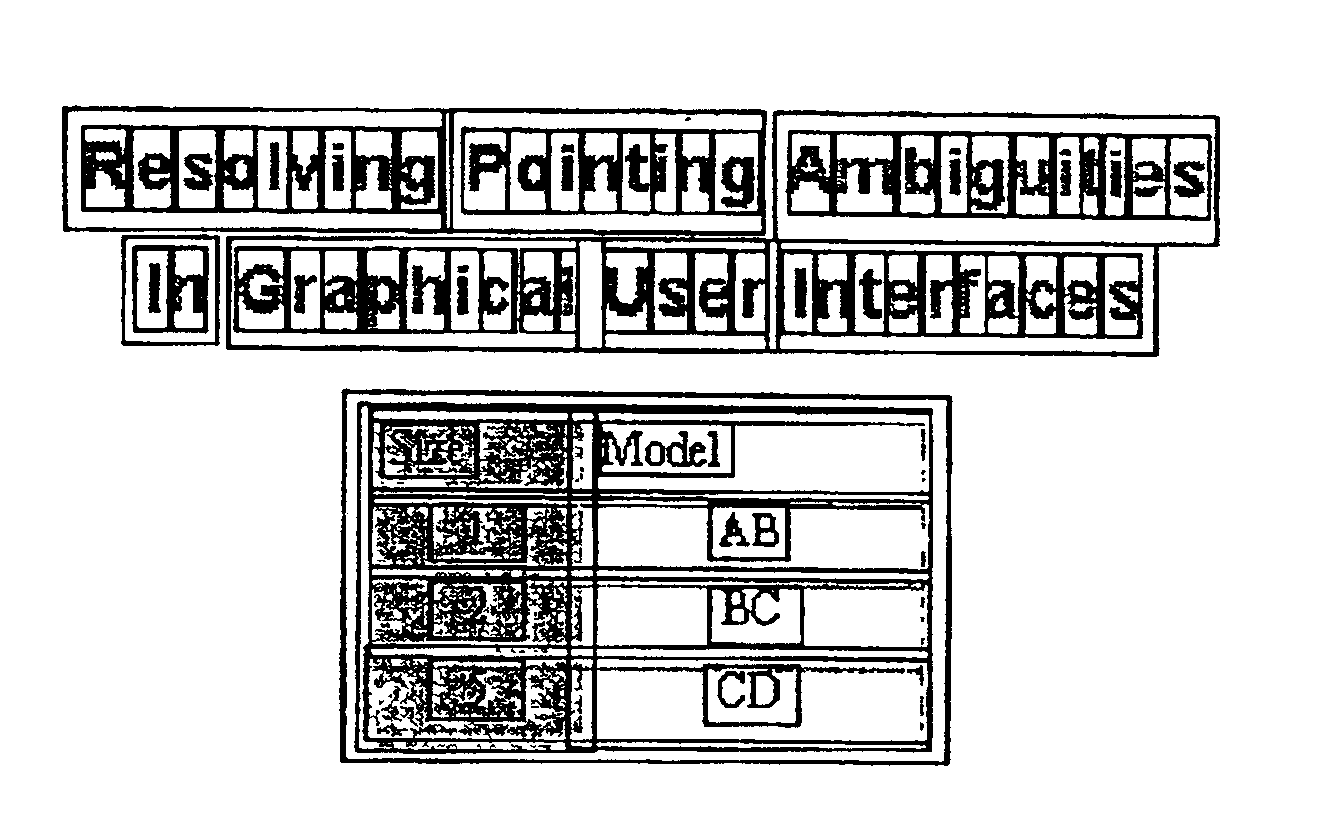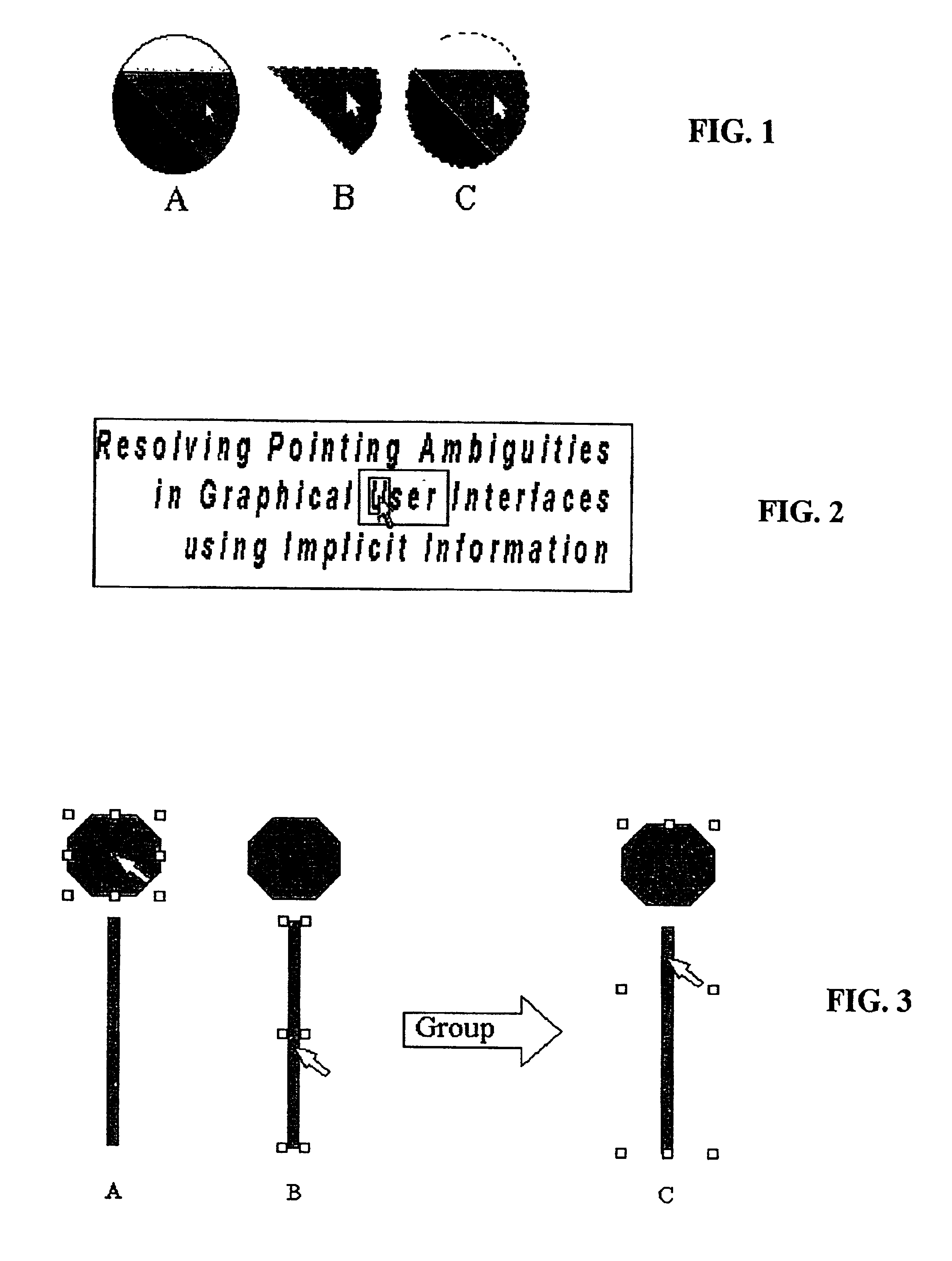Method and system for implicitly resolving pointing ambiguities in human-computer interaction (HCI)
a human-computer interaction and implicit resolution technology, applied in the field of human-computer interaction, can solve the problems of significant limitation of dm, limited dm, and interaction requirements that can be reduced to graphical representation, and achieve the effect of fast user acquisition and simplified design and implementation of human-computer interaction
- Summary
- Abstract
- Description
- Claims
- Application Information
AI Technical Summary
Benefits of technology
Problems solved by technology
Method used
Image
Examples
example
Simulated Human-computer Interaction (HCI) Environment
[0192]The simulated human-computer interaction environment features a basic direct manipulation (DM) interface including different user targeted objects in the form of hierarchical shapes, which are selected simply by a user pointing at them, with no other object selection mechanism provided to the user. Implicitly resolving the pointing ambiguities by implicitly analyzing user movements of a pointer towards each user targeted object located in the ambiguous multiple object domain simulated human-computer interaction environment and predicting the user targeted object were done by using the first or ‘pre-click suggestion’ preferred embodiment of the present invention, including using the three categories of heuristic measures, that is, (i) implicit user pointing gesture measures, (ii) application context, and (iii) number of computer suggestions of each best predicted user targeted object. The particular types of implicit user po...
PUM
 Login to View More
Login to View More Abstract
Description
Claims
Application Information
 Login to View More
Login to View More - R&D
- Intellectual Property
- Life Sciences
- Materials
- Tech Scout
- Unparalleled Data Quality
- Higher Quality Content
- 60% Fewer Hallucinations
Browse by: Latest US Patents, China's latest patents, Technical Efficacy Thesaurus, Application Domain, Technology Topic, Popular Technical Reports.
© 2025 PatSnap. All rights reserved.Legal|Privacy policy|Modern Slavery Act Transparency Statement|Sitemap|About US| Contact US: help@patsnap.com



